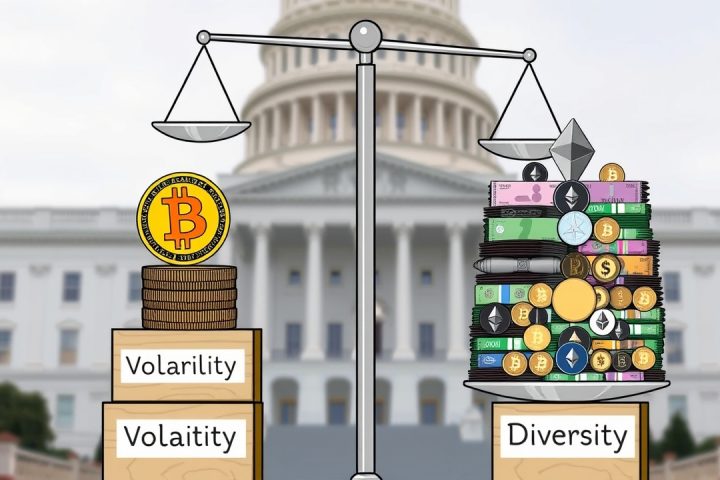Overview of Decentralized Finance (DeFi)
Decentralized Finance, commonly referred to as DeFi, has undergone significant evolution since its inception in 2018, emerging as a vital component of the global cryptocurrency ecosystem. By leveraging an array of open and permissionless financial protocols, DeFi enables a diverse range of financial activities such as trading, lending, derivatives, stablecoin creation, and asset management. This innovative financial sector is predominantly built on smart contracts, on-chain settlement, and decentralized governance, effectively replicating and restructuring traditional financial systems. The surge in DeFi’s popularity, particularly marked during the so-called ‘DeFi Summer‘ of 2020, has led to a remarkable total value locked (TVL) exceeding $180 billion, highlighting the sector’s immense growth and market validation.
Regulatory Challenges in DeFi
However, this rapid growth has not been without challenges. The DeFi space is fraught with uncertainties regarding compliance, systemic risks, and regulatory gaps. Under the leadership of Gary Gensler, the former chair of the U.S. Securities and Exchange Commission (SEC), regulators have shifted to a more centralized enforcement approach, categorizing many DeFi protocols and decentralized exchanges (DEXs) as potential platforms for illegal securities trading and unregistered activities. From 2022 to 2024, notable firms such as Uniswap Labs, Coinbase, and Kraken faced investigations and enforcement actions from the SEC and Commodity Futures Trading Commission (CFTC), indicating the tightening regulatory scrutiny.
The lack of clear definitions regarding decentralization and the operating characteristics of DeFi platforms has left the industry grappling with stagnation, dwindling investments, and a talent exodus amid growing policy ambiguity.
Policy Shift and New Regulatory Framework
A significant policy shift occurred in the second quarter of 2025 when the new SEC Chairman, Paul Atkins, presented a more constructive regulatory approach at a Congressional Fintech Hearing. Atkins introduced three key proposals:
- An Innovation Exemption Mechanism for highly decentralized protocols to suspend certain registration requirements within trial parameters.
- A Functional Categorization Framework to classify and regulate platforms based on their operational logic rather than token classifications.
- Inclusion of decentralized autonomous organizations (DAOs) and real-world asset (RWA) projects within a regulatory sandbox to better align evolving technology with manageable oversight.
This proactive stance aligns with the White Paper on Systemic Risks of Digital Assets from the U.S. Treasury’s Financial Stability Oversight Committee (FSOC) released in May, which advocated for regulatory experimentation to promote investor protection without stifling innovation.
Regulatory Landscape and Legal Challenges
The evolution of DeFi regulation in the U.S. not only mirrors adjustments within the financial compliance framework but also illustrates the ongoing tug-of-war between fostering innovation and mitigating risks. The current stance of the SEC represents a culmination of a multi-year dynamic involving various institutions and regulatory philosophies.
In a retrospective analysis, it’s pivotal to revisit how early regulatory philosophies have influenced the current landscape. Initially grounded in the 1946 Howey Test—a legal precedent for identifying securities—the SEC consistently viewed many DeFi tokens as unregistered securities, thereby subjecting them to compliance risks.
Noteworthy enforcement actions from 2021 and 2022, including investigations into Uniswap Labs and Balancer, indicate a robust crackdown from regulators, operating under an assumption of illegality where the burden of proof was placed on the projects.
Legal challenges have emerged, notably with the SEC v. Ripple case, wherein a ruling that XRP did not constitute a security in certain scenarios undermined the SEC’s broad assertions. Concurrently, ongoing legal disputes with Coinbase have propelled the demand for greater regulatory clarity, making it a focal point for legislative advocacy surrounding cryptocurrencies.
Moving Toward a Nuanced Regulatory Framework
Despite the SEC’s aggressive enforcement regime, complications arose surrounding the classification of DAOs. Their lack of traditional legal identities poses significant challenges for regulators, complicating the enforcement of standard practices seen in established financial entities.
Responding to such challenges, the SEC under Atkins initiated a DeFi Strategy Research Group aimed at developing a systematic risk assessment framework based on technical functionalities and operational behaviors of protocols. This marks a transition toward a more nuanced regulatory framework that recognizes the unique characteristics of decentralized finance.
Under the new policy paradigm, the SEC has sought to differentiate between various project types. Projects demonstrating significant centralized elements must meet traditional compliance standards, while those that are distinctly decentralized could be afforded exemptions and regulatory leniency. Furthermore, the establishment of regulatory sandboxes is intended to encourage collaboration between projects and regulators, promoting a stable and compliant DeFi ecosystem without impeding technological progress.
Impact on the Market and Future Outlook
This evolving regulatory landscape is poised to reshape the future of decentralized finance. As regulatory clarity improves, the DeFi sector is gradually transitioning from speculative valuations to a more grounded assessment of value, driven by actual revenue generation and compliance capabilities.
The recent policy shifts have already begun to resonate in the market. Following the announcement of the new SEC guidelines, the total value locked in DeFi surged from approximately $46 billion to nearly $54 billion, a testament to the revitalized investor confidence and institutional interest.
Furthermore, many DeFi tokens, including governance tokens like UNI and AAVE, have experienced remarkable price increases, signaling a shift in market perception toward the legitimacy and future potential of these protocols. The incorporation of traditional financial metrics such as price-to-earnings and valuation multiples has begun to address the historical discounting of DeFi assets stemming from regulatory anxieties.
Looking ahead, the SEC’s novel policy framework not only addresses compliance expectations but also reinforces the concept of on-chain finance as a legitimate avenue for institutional investment. This maturation of the DeFi space partners compliance with innovation, fundamentally reconfiguring its role within the broader financial landscape.
Conclusion
In conclusion, the U.S. regulatory advancements signify a pivotal juncture for DeFi, transitioning it from a nascent, loosely regulated environment towards a structured, compliant financial infrastructure. As the industry continues to navigate the complexities introduced by evolving regulations, the potential for broad financial inclusivity and innovative business models remains an essential focus for the secure and prosperous future of decentralized finance.




